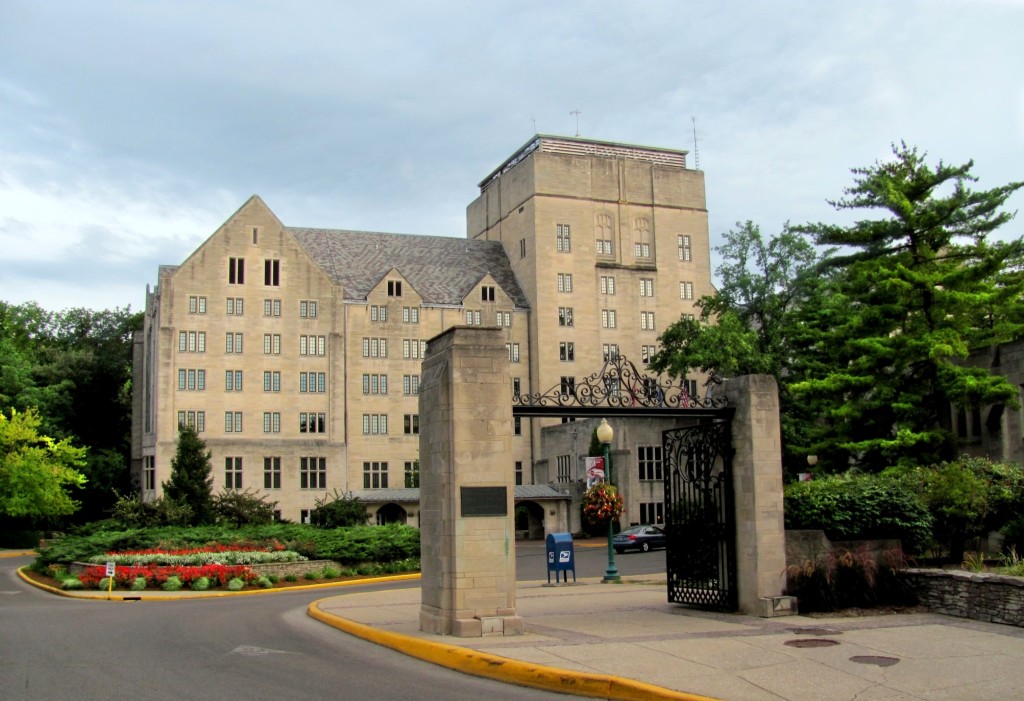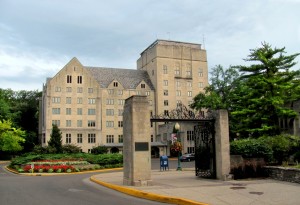Follow our weekly series, Throwback Thursday, designed to help celebrate 50 years of OHA. We’ll profile a year in the life of the organization each week with photos, logos, and highlights taken from the Oral History Association Newsletter. We welcome your memories, photos, and comments at oha@gsu.edu.
OHA in 1971…another logo!
President: Forrest Pogue, George C. Marshall Research Foundation
Site of the Annual Colloquium: Indiana University, Bloomington
Newsletter: James Mink Editor; Bernard Galm, Associate Editor
Editorial office located at University of California, Los Angeles
Annual individual membership: $7.50
- Dr. Louis Starr, Director of Columbia’s Oral History Research Office, announced that the New York Times had agreed “to reproduce and distribute Columbia’s open oral history transcripts on both microfilm and microfiche.” Starr called the 10-year agreement “a landmark for oral history everywhere.” The agreement came after lengthy discussions over legal and confidentiality issues. Starr saw this as a way to benefit scholars and libraries who would soon have access to research material.
- Historian Allan Nevins, Honorary Chairman of the OHA, died on March 5, 1971. Nevins, twice the winner of the Pulitzer Prize and one of America’s most prolific biographers, will be remembered as the “father” of modern oral history.
- OHA announces the publication of Oral History in the United States: A Directory. The 120-page volume describes more than 230 projects at universities, historical societies, and research libraries acorss the country. Nearly half of the collections were begun within the last three years.
- Paige Mulhollan, dean of the College of Arts and Sciences at Kansas State and an interviewer for the Lyndon B. Johnson Oral History Program, presented a paper on oral history at the 75th annual meeting of the Texas State Historical Association. The OHA Newsletter published his paper describing what had been learned during the interview process. He states, “These large national oral history collections will give historians a perspective on second-level bureaucrats and private citizens whose views and contributions historians have necessarily ignored before the rise of oral history. Oral history projects will also make available anecdotal depth not in the documentation…historians in the 1990’s who write about the Johnson years in Texas, if they possess any literary merit, will be able to write more entertaining history than those who preceded them. And that will make it better history as well. Oral history also emphasizes topics rarely emphasized. There will be a wealth of material not usually in the documents…”
Who were we interviewing in 1971?
- Center for Advanced Film Studies, Beverly Hills–first-hand accounts of individuals who played significant roles in the history of motion pictures
- Calfornia State University Fullerton and University of Utah–prospectors and others involving in mining for uranium
- National Air and Space Museum, Smithsonian Institution–persons who have contributed to aeronautics and space flight development
- State University of New York at Binghamton and Hamilton College–Northern New York logging communities
- U.S. Naval Institute oral history program director John T. Mason reports that Russian military visiting Annapolis said they have been interviewing military figures “with special attention to Soviet marshals and men of historical significance.”
Indiana University Memorial Union, site of 1971 Colloquium
Check back next week for news of 1972…


